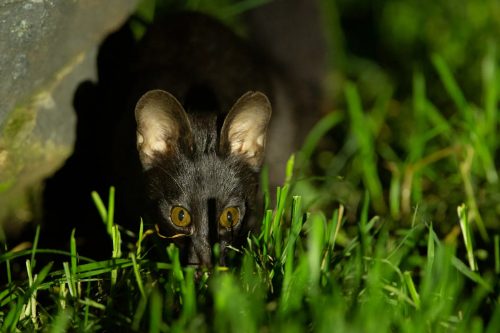
Cat sightings have been fantastic this week. Consistent encounters with the new lion cubs around Egyptian Dam has left guests overjoyed. Leopards have been out and about, posing for photographs, while cheetah have been making kills every other day. But all of this was overshadowed by a brief view of one of the most rare colour morphs of a large-spotted genet. [f 5.6, 1/1000, ISO 160, +0.67]
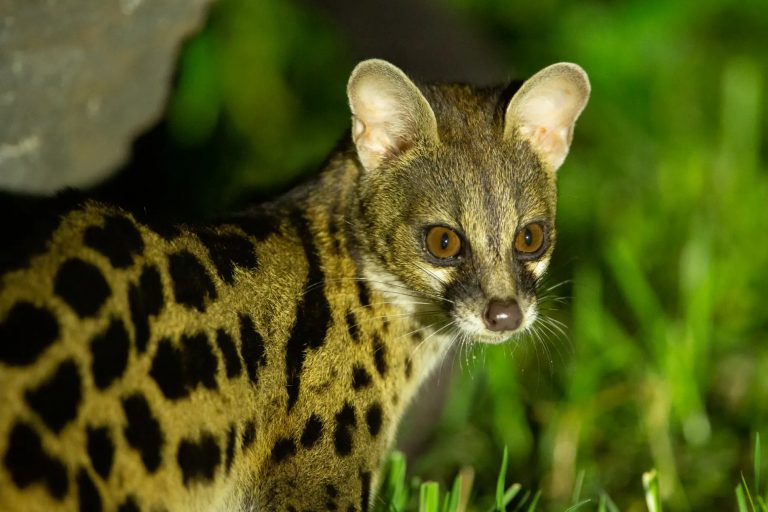
Pictured here is the normal appearance of a large-spotted genet, a delightful nocturnal and arboreal carnivore. This particular individual is the mother to the recently seen, and photographed, melanistic genet. At this stage we are not sure if the black genet will become a regular visitor to the camp, but we are all extremely excited, as this is truly one of the most astounding wonders and anomalies of the animal world. [f 4.0, 1/200, ISO 6400, -0.67]
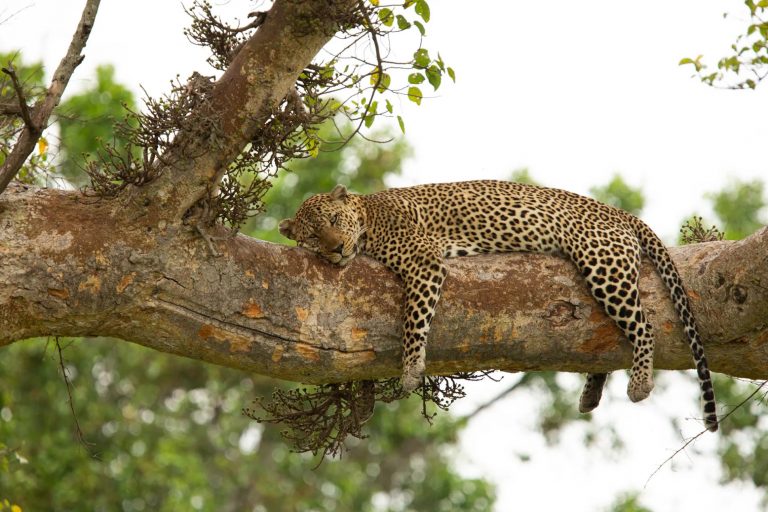
This week, I conducted several private photography workshops. We took one full day to drive the width of the entire Maasai Mara in an attempt to photograph the diversity of the landscapes. We came across this most magnificent male leopard lounging about in a fig tree. Rangers told me that he is called the Keekarok Stream male – a new leopard for me. [f 4.5, 1/640, ISO 640, +1.0]
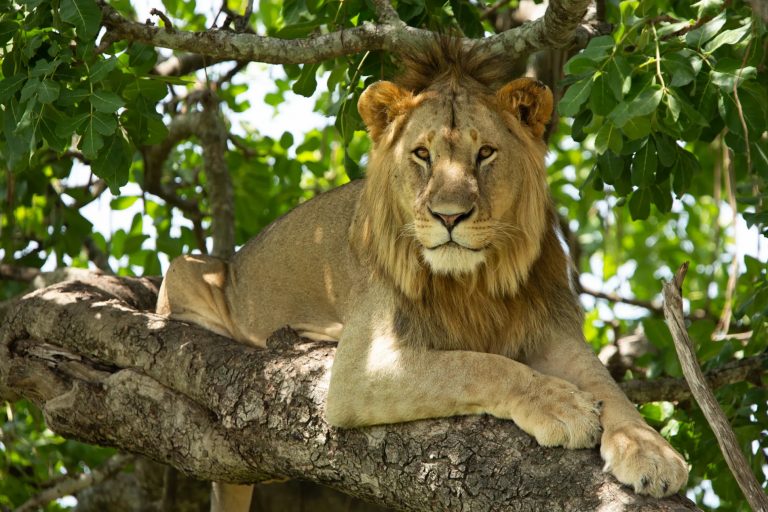
Determined not to be overshadowed by their “rosetted” counterparts, we also found two male lions resting in a tree. Not quite fully grown, these two males were still large enough to make their tree climbing appear rather awkward. [f 5.6, 1/320, ISO 250, +0.67]
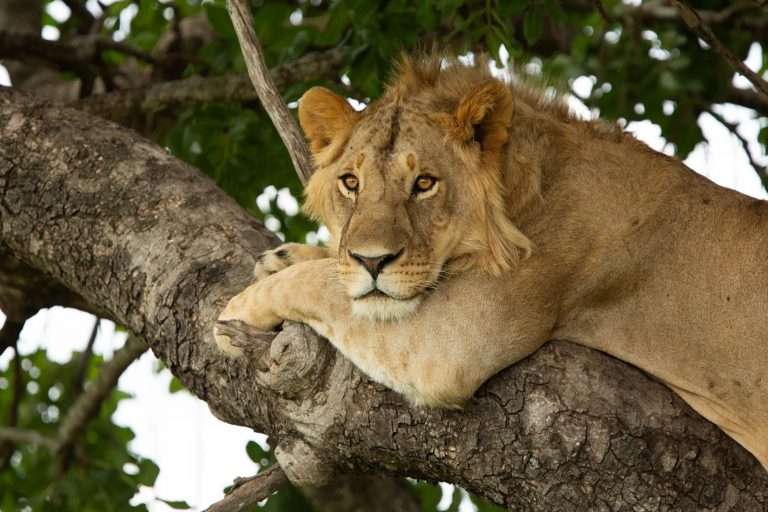
However, when they both at last found a comfy spot – they looked delightful. [f 4.5, 1/400, ISO 160, +0.33]
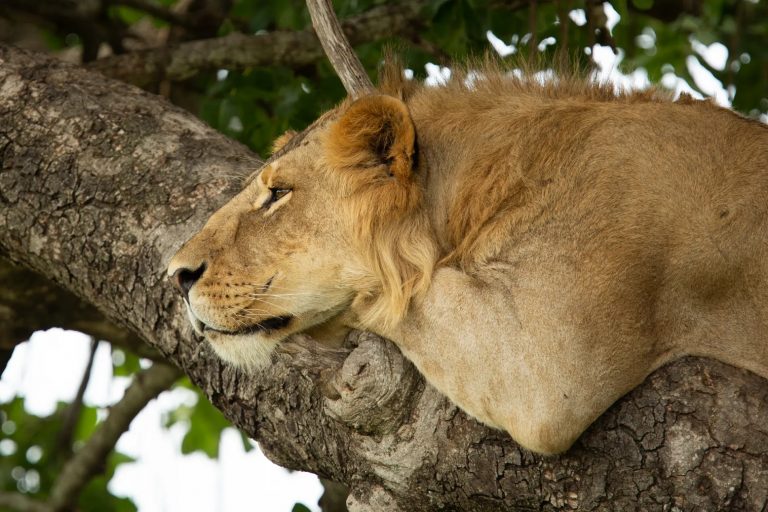
And made for spectacular photographic models. [f 4.5, 1/400, ISO 160, +0.33]

Back in the Triangle, we are experiencing a male lion influx. Pictured here, crossing the road, is one of the two males that are now constant companions to the pride with new cubs around Egyptian Dam. [f 4.5, 1/800, ISO 400, +0.33]

Boxer-nose and his trusty companion are two of the larger males currently living in the Mara Triangle. This week, on a full-day drive we saw a total of eight male lions. They obviously know that we are 13 days away from the launch of The Lion King. [f 4.0, 1/1000, ISO 250]

On the subject of The Lion King, here is a cousin of Zazu. While the ground hornbill may not feature in the movie, he is a rather fascinating bird nonetheless. Look closely and you will see the facial pigmentation is blotchy and part yellow, part red. These birds are thought to live as old as 50-60 years. They start off with yellow pigmentation and it takes up to six years for that skin to turn its characteristic red colour. [f 5.0, 1/160, ISO 800]

Digging into the archives – here is the exact same bird almost a year ago (18 July 2018). Even at that stage he had some red pigment showing. Can you believe it has taken a year to add this tiny amount of red? [f 4.0, 1/400, ISO 200, +0.33 – photograph taken 18th July 2018]
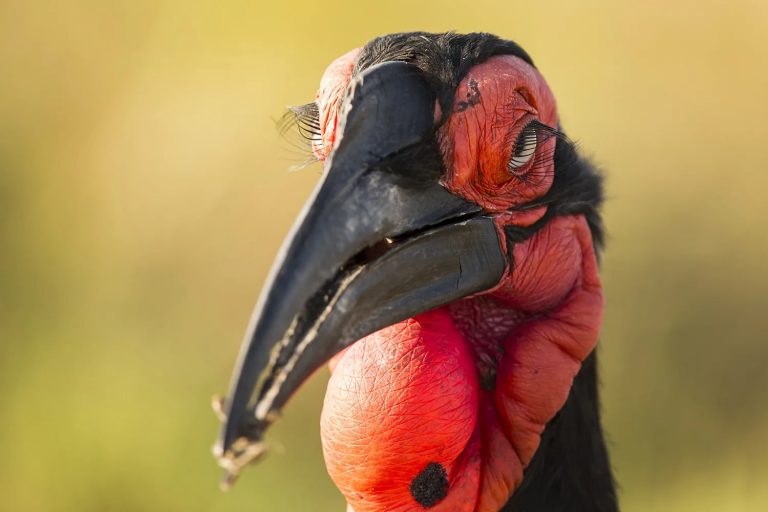
Here is a fully-grown male showing his magnificent red colouring and extra-long eyelashes. This could well be the younger bird’s father. [f 4.0, 1/320, ISO 200, +0.33– photograph taken 18th July 2018]

It’s often said that the Lilac-breasted Roller is the most photographed bird in Africa. Well, in my opinion, the grey-crowned crane is the most photographed bird in the Maasai Mara. [f 4.0, 1/3200, ISO 400]

The martial eagle: perhaps not the most photographed bird, but without a doubt one of the grandest. [f 4.0, 1/1600, ISO 400, +0.67]

On the topic of birds, I was fortunate to take a short scenic flight on a tiny Bathawk. This miniature airplane will be used by the Mara Conservancy to patrol the park more efficiently. The flight allowed me to get a few photographs of Angama Mara from the air. [f 5.6, 1/1600, ISO 400, +0.67]

The more traditional way of flying in the Maasai Mara is to take a sunrise flight in a hot-air balloon. [f 5.0, 1/800, ISO 640, +0.33]
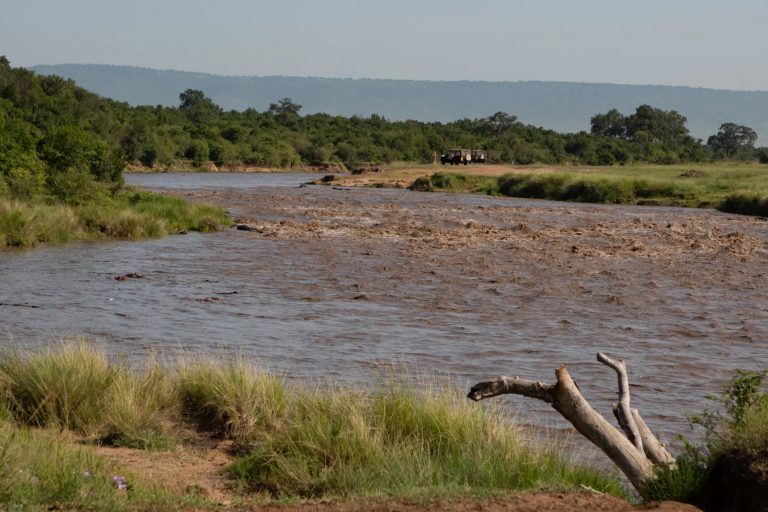
Much has been written about the unusual rainfall this year, and of how the Mara River nearly dried up not too long ago. I am happy to show you images of the river this week. Taken at the main crossing point and looking upstream, you can clearly see the river is in full flow. [f 5.6, 1/250, ISO 100]
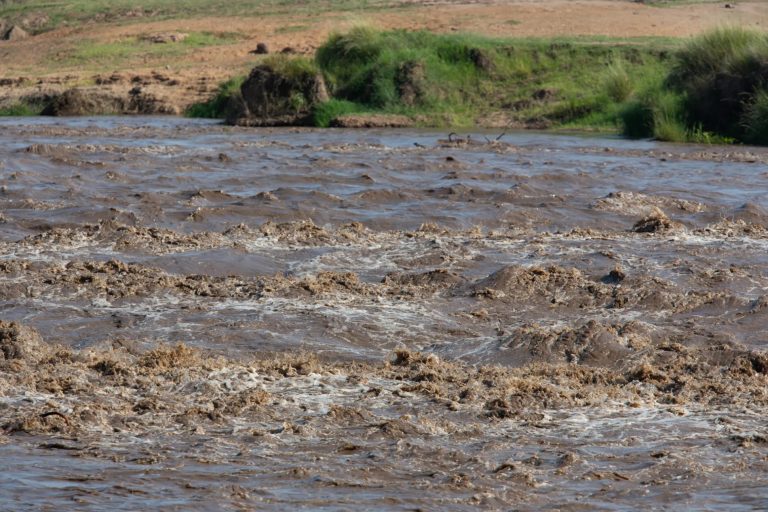
The raging waters have created a rather formidable river. I often wonder where the crocodiles go at times like these? [f 5.6, 1/640, ISO 100]
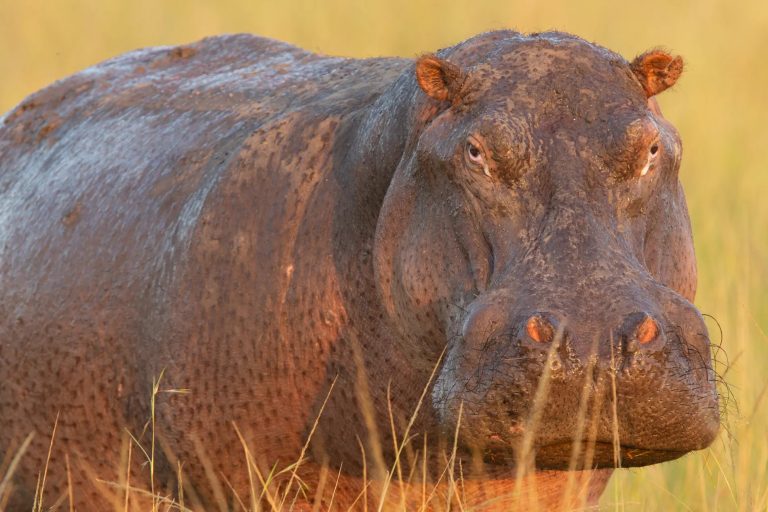
The hippos have all moved out of the main river course and are wallowing in the many flooded pools. Doesn’t this hippo look rather grumpy? [f 5.0, 1/400, ISO 800]
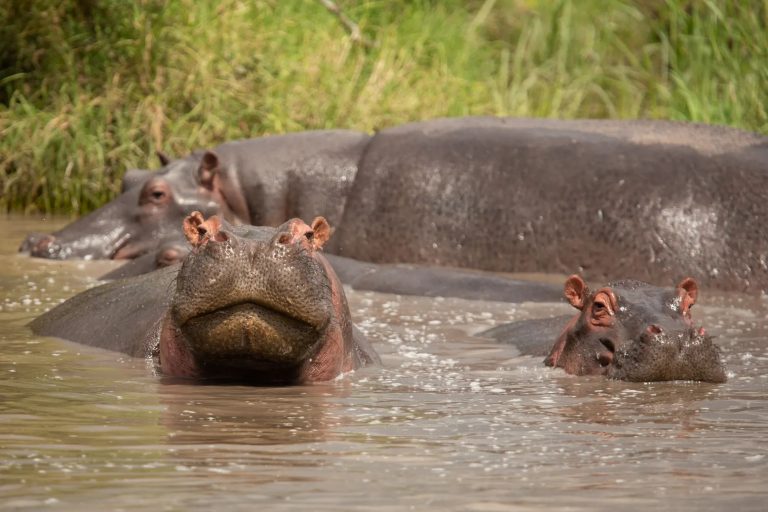
These individuals look far happier. [f 4.0, 1/3200, ISO 400]
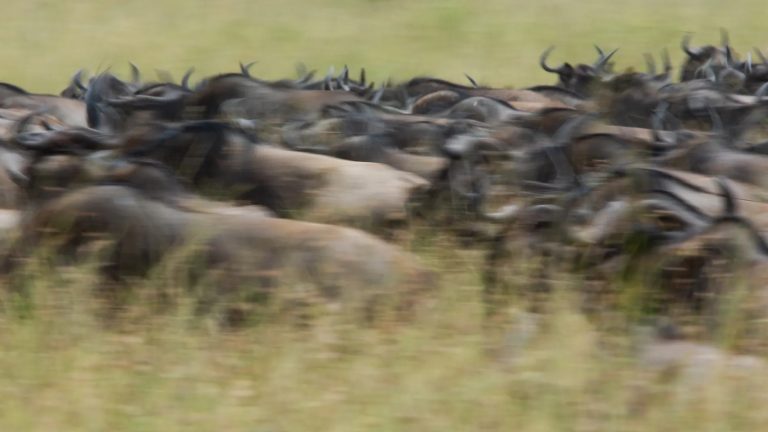
There is much befuddlement about the wildebeest and migration movements. I can confirm that there are many smaller herds of wildebeest in the greater reserve, although currently the bigger herds are still in Tanzania. Of course, all of that could change within hours. I wanted to get a blurry and rather confusing shot of the wildebeest this week to try put across the main sentiment: confusion. [f 20.0, 1/30, ISO 200]

By no means a great photograph, but I included it as I wanted to mention that even though the wildebeest haven’t arrived in great numbers just yet, the Thomson’s gazelle numbers are multiplying. You can watch them streaming into the Mara Triangle; a good omen for the big herds that could be hot on their heels. [f 8.0, 1/640, ISO 250, +0.33]
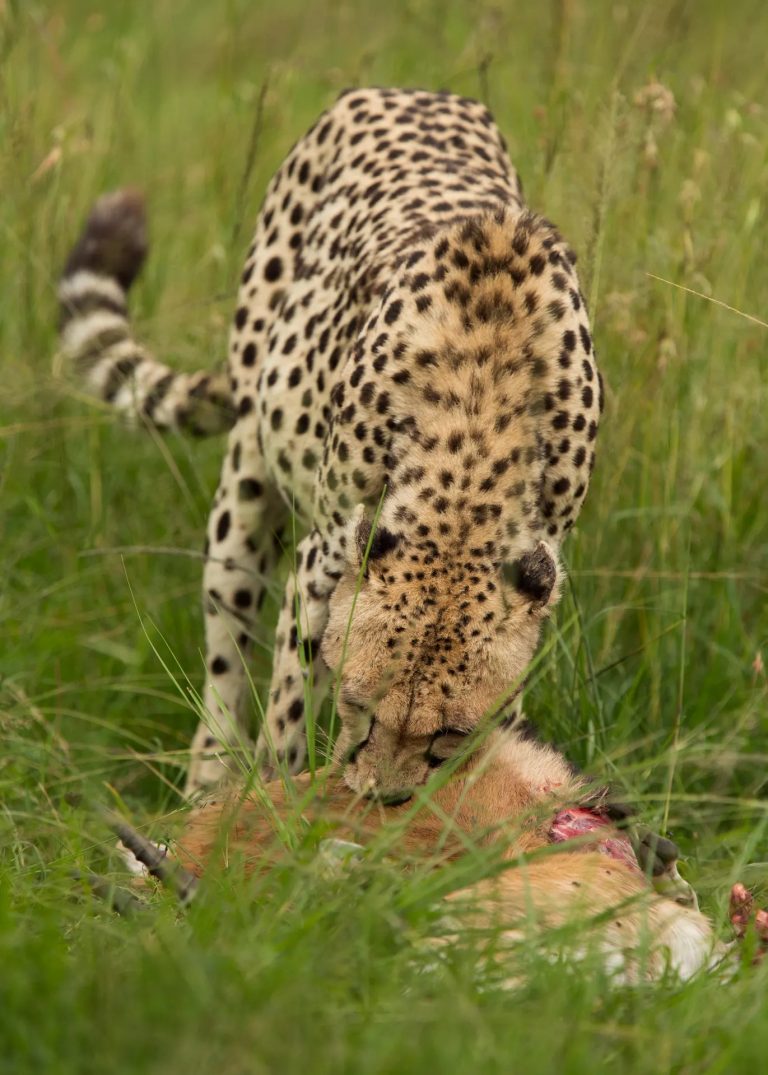
Of course, the sudden explosion of Thomson’s gazelles in the area means that cheetah have had a far easier job hunting. [f 4.5, 1/1000, ISO 640, +0.33]

The Maasai Mara: a photographer’s paradise. [f 4.5, 1/1000, ISO 640, +0.33]
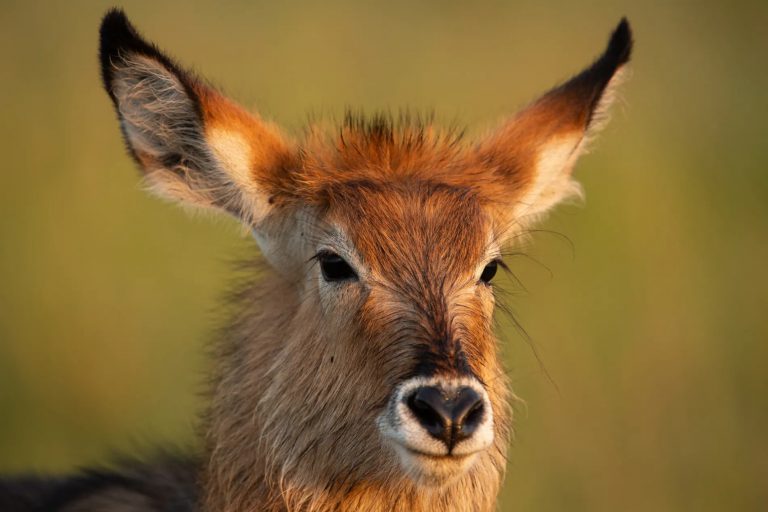
The early morning light falls on the delicate features of a young waterbuck. [f 5.0, 1/640, ISO 800, -0.33]
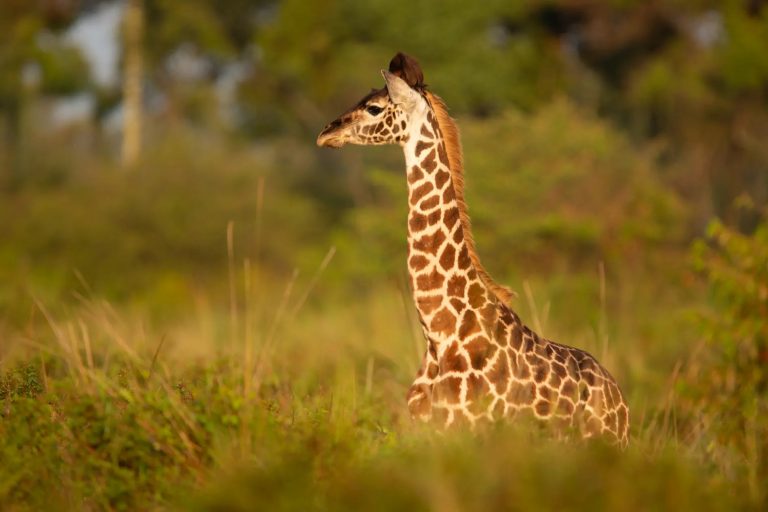
And not wanting to be overlooked when it comes to adorability, I just had to include this photo of a baby giraffe at sunrise. [f 4.0, 1/1000, ISO 500]
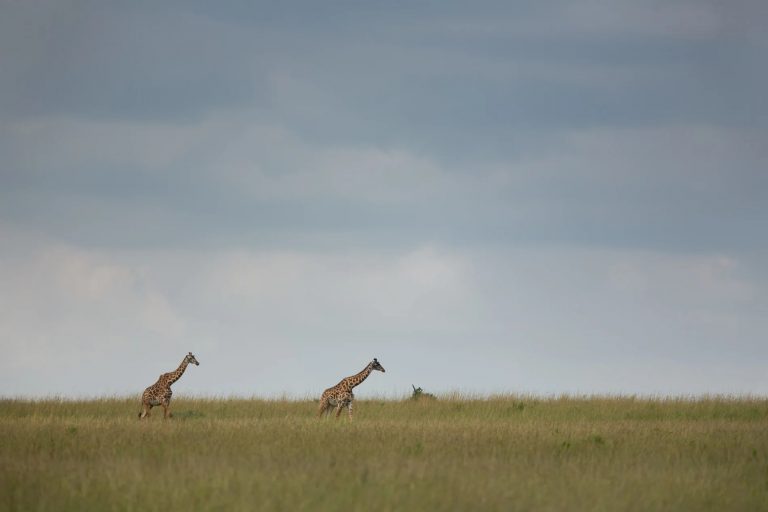
As the sun rises in the sky, so photography becomes more of a challenge requiring a change in approach. [f 4.0, 1/1600, ISO 200, +0.67]
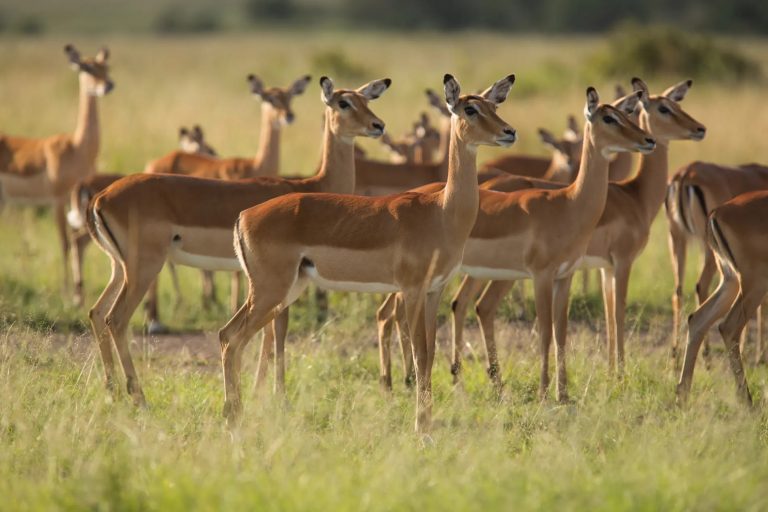
It becomes less about the glorious lighting and more about the composition, subject matter and storyline. Here, a herd of vigilant impala watch on as a spotted hyena walks by. [f 5.0, 1/1000, ISO 250, +-0.67]
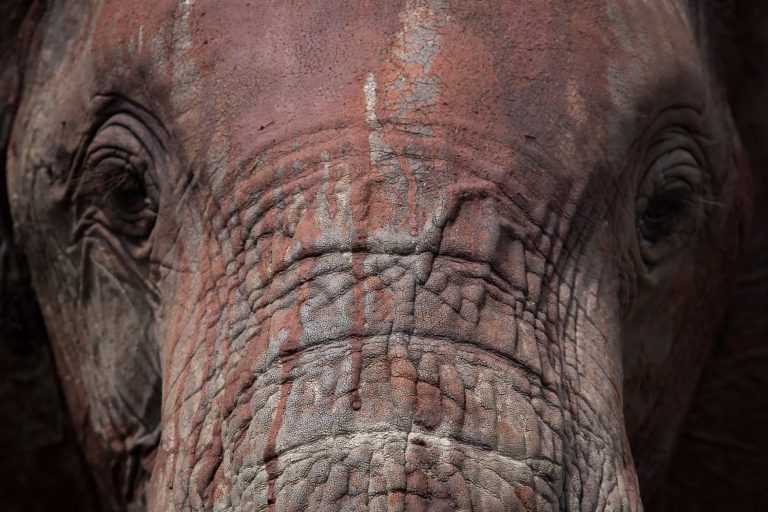
Caked in a muddy variety of colours, a close-up of this young elephant was all about texture, contrast and unusual shades. [f 5.6, 1/640, ISO 250, +0.33]

This is one of the most remarkable things I have ever seen. Look closely. A solitary buffalo bull takes a break, resting in the open with his back turned to a small pride of lion also deep in slumber. They were no more than 25 meters apart. It was almost as if both predator and prey were so exhausted that they had agreed on a momentary ceasefire whilst they all caught up on some much-needed sleep. [f 5.6, 1/2000, ISO 400, -0.33]
THIS WEEK A YEAR AGO

Hard to believe that it has already been a year since the Angama Foundation, together with the Nobility Project opened the new early childhood development centre at the nearby Partakilat Primary School. Along with conservation and heathcare, investing in education is one of the core pillars of the Angama Foundation. [Photograph taken on an iphone by Tyler Davis]
Filed under: This Week at Angama
Subscribe for Weekly Stories
Comments (6):
19 July 2019
the Last Minute Mara is very good value!
7 July 2019
I am falling in love with the place.Keep the info coming.If you are doing any promos or such like plse keep me I formed.
5 July 2019
Wonderful post! The Keekorok River Male you met also goes by Kisinja to other guides. I'd not heard of him mentioned with that other name before, but hes also known as the Keekorok male. That black genet is a once in a lifetime sighting! I love your blog it's such a nice and informative read.
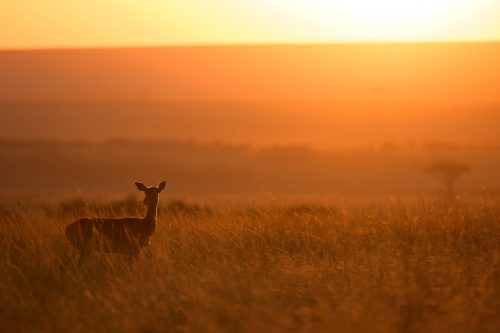
Rates & Availability